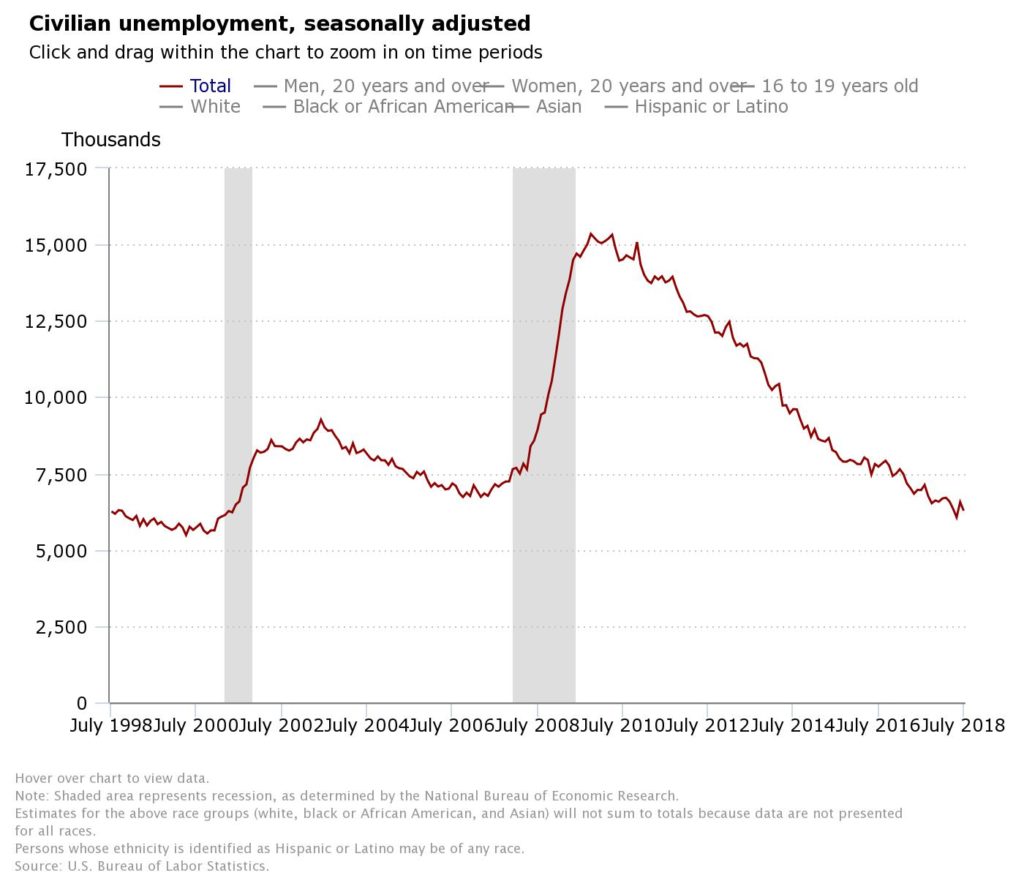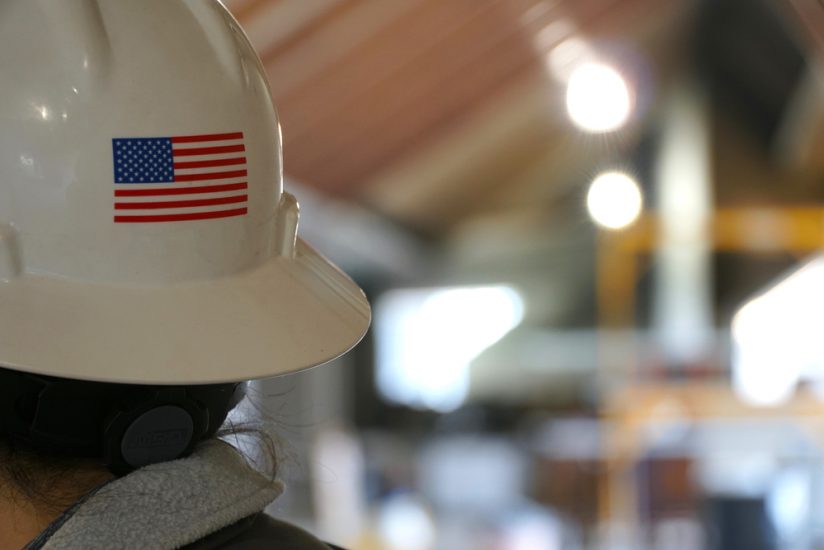Like last month, manufacturing and health care employment was solid as the nation continued its impressive run of 94 straight months of job growth. Nonfarm payrolls added 157,000 workers in July and the U.S. unemployment rate dropped slightly to 3.9 percent after ticking up to 4.0 percent in June.
The U.S. Bureau of Labor Statistics reported that the manufacturing sector gained 37,000 jobs last month for a total of 327,000 jobs over the past 12 months. It is a sign that manufacturing is reviving in the U.S., but it is not close to its pre-recession employment level. Experts point to the industry’s skills gap as a reason why job growth could stagnate over the next decade.
The rise of health care and social assistance jobs also indicates that a demand for middle-skill workers shows no sign of abating. The aging U.S. population is driving the need for more services and contributing to a shortage of skilled labor. According to the BLS, almost half of all registered nurses will reach retirement age by 2020. Another shortfall of skilled health care workers is projected to last until 2030 and employers must figure out how to bridge the skills gap, like in manufacturing.
RELATED STORY: Moving on up? Study finds not all middle-skill jobs are created equal
Employers’ demand for skilled workers reflects their growing competition within a shrinking labor market. But a corresponding rise in wages has yet to take hold in the months following a major tax cut delivered to corporations. Average hourly wages grew 7 cents in July to $27.05 and rose 2.7 percent since 2017. As New York Times reporter Steven Greenhouse pointed out on Twitter, consumer prices increased 2.9 percent in the same time period. Inflation negated any purchasing power for consumers gained through the wage hikes.

Though July’s job growth did not match economists’ projections and wage growth was minimal, other metrics show the economic recovery is reaching down to underemployed and unskilled workers. The BLS reported that part-time workers who want full-time positions stayed the same from June at 4.6 million, but has fallen by 669,000 since last year. Economist Betsey Stevenson noted that the unemployment rate for workers with only high school degrees reached a low of 4.0 percent.
These are great signs that those who are entering the labor market are obtaining income regardless of their skill and education level. It also signifies that the tight labor market is allowing employers to relax hiring requirements to fill available job openings.
Stevenson questioned whether slow wage growth was a result of workers not taking advantage of their bargaining power or employers were using other methods to attract job seekers. A recent report from the Society for Human Resource Management affirms the latter, with more employers offering benefits like paid parental leave.
More takeaways from the jobs report:
- The demand for construction workers also resulted in more than 19,000 jobs added in July. This industry also faces similar issues in sourcing and developing skilled talent. WorkingNation will profile the nonprofit organization SkillsUSA in an upcoming Do Something Awesome mini-documentary this month. SkillsUSA promotes the trades and hosts an annual competition of the best students from Career and Technical Education programs.
- The strong growth in middle-skill occupations drives home the need to close the skills gap in construction and manufacturing. The recent federal reauthorization of the Perkins Act should go a long way to supporting CTE programs across the country. Here is our take on this legislation.
- Hiring in professional and business services also outperformed other sectors and had significant growth over 12 months with 518,000 jobs added. The majority of the 51,000 jobs gained in July were for temporary help services (28,000). This reflects a growing trend of employers using temporary and contract workers instead of hiring full-time employees.
- New York Times reporter Ben Casselman wrote on Twitter that there were many positives to draw from the BLS July jobs report, including the share of full-time workers in the labor market and the decline of part-time workers who cannot secure full-time employment.
- Retail’s gains were negligible in July with 7,000 new jobs. The BLS said that the gains were offset by a loss of 32,000 jobs in sporting goods, hobby and game stores. This may be their oblique reference to the closure of Toys ‘R’ Us and the struggles of video game retailer GameStop.
Check back with WorkingNation next week for Senior Business Correspondent Ramona Schindelheim’s article providing context to the BLS jobs report. Last month, Schindelheim asked two economists for their opinion on why wages remain flat despite the low unemployment rate. Her articles on the jobs report are featured monthly in the Jewish Journal.
Join the Conversation: How can the country sustain long-term job growth in the face of trade wars and the ongoing revolution in technology? Have your say on our Facebook page.











